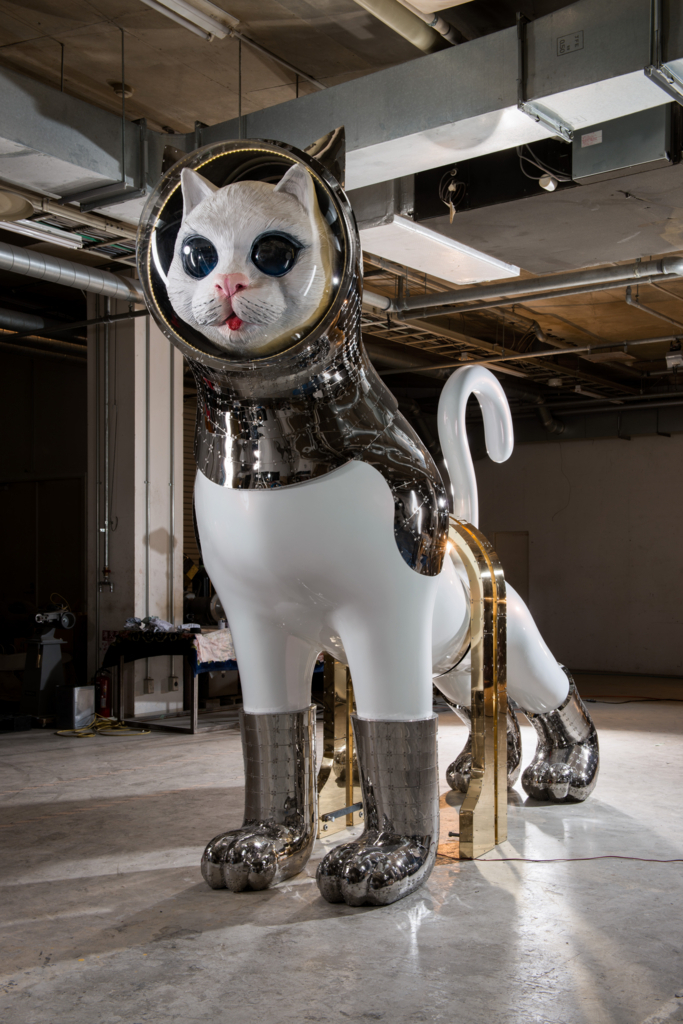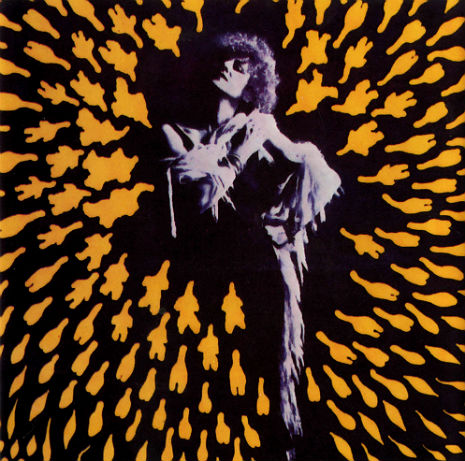
Kenji Yanobe is a Japanese sculptor who has isolated a fascinating niche for himself. Inspired by the Cold War nuclear nightmares of Japanese kaiju cinema, he has in the past focused on huge statues of robots wearing brightly colored hazmat suits and his work also has been known to incorporate actual geiger counters. Some have called his work “cynical,” and when the subject comes up he tends to switch the parameter to “humor.” But somehow, actual fear constitutes the core impetus of his work. Yanobe has said, “I worry about things. I’m constantly thinking about people’s happiness.”
Yanobe has been identified as a member of the “Otaku Generation,” which consists of Japanese kids who grew up in the 1970s consuming robot shows, animated TV shows and movies, and comic books. Wikipedia refers to his art as “upbeat yet nightmarish,” which is definitely a cool place to be. For eighty bucks you can buy a curious keychain of a Yanobe person wearing yellow protective gear and a Hitler mustache. There are also a bunch of books about Yanobe.
“Ship’s Cat,” the artists most recent project, recalls his earlier work but with a patina of heroism and idealism. There’s another way to describe the new statues: they depict enormous cats wearing helmets, and that is awesome.

Yanobe at work on one of his feline creations
As far as I can tell, all of them are public artworks intended to be interacted with by the public; none of them are in a museum. The first one was installed as part of the glass entryway at the We Base hostel in Hakata, which is known as Japan’s oldest port town. Two of them are at the Tsutaya Books within the Ginza Six department store, and one of them is perched atop Nihonmatsu Castle in the northern Fukushima Prefecture.
The inspiration for the works comes from the centuries-old tradition of bringing a cat as a crew member for trips on oceangoing vessels, whether for trading, exploration, or military purposes. Cats have long been regarded as useful onboard ships because of their penchant for chasing mice and rats, which not only cause damage in ropes and wires but also are dangerous disease carriers.
Over time, as in bookstores, hostels, and communes the world over, cats became an accepted and even beloved part of the experience of working on a ship. Yanobe has drawn inspiration from these noble felines, leading him to create oversized sculptures of cats wearing protective gear and helmets.
An excellent touch is that the cat’s eyes light up at night.
 a
a

More pics and a video after the jump…..





















